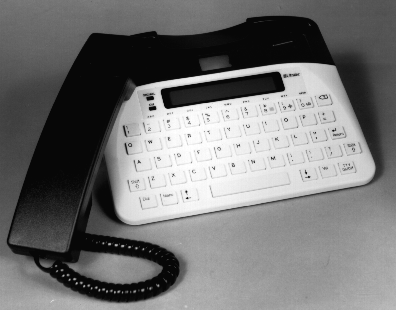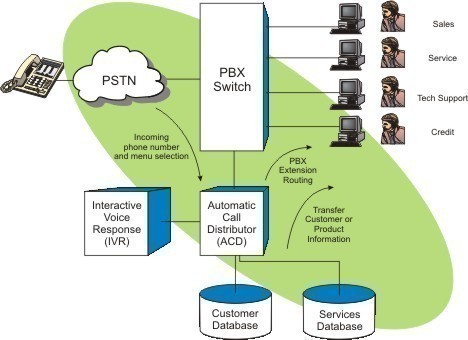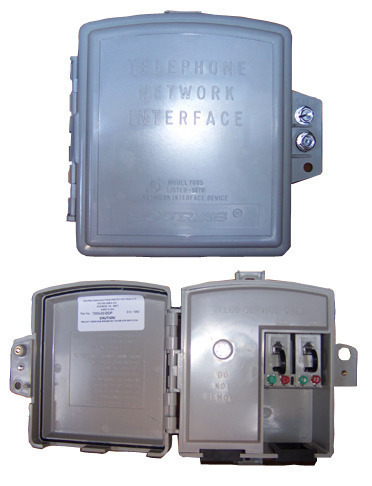TTY/TDD stands for a group of telecommunication devices that make it easier for deaf and/or mute people to talk over telephone lines. TTY stands for telephone typewriter, teletypewriter or text phone. TDD stands for Telecommunications Device for the Deaf. Usually these devices are all categorized under TTY/TDD. Sometimes TTY means manual devices such as typewriters, TDD devices usually fall under computer assisted or digital devices.
For the most part, a TTY/TDD device is the size of a typewriter or a small computer. The vast majority of these devices have a QWERTY keyboard and some sort of display screen that either uses LED, LCD or other display technology. Many TTY/TDD devices also include a printer which can use many types of printing technologies; however some resemble typewriters and have a spool of paper. With devices that have printing technology, text can be printed, shown on a display device or both.
How TTD/TTY Works
TTD/TTY devices use normal phone lines to communicate. An individual with a TTY/TDD can either communicate with another TTY/TDD device or can make a call to a standard telephone. In this case, the TTY/TDD device calls a live relay operator and the live relay operator communicates with both parties either with a TTY/TDD device or uses their normal human voice on a standard telephone. It is important to note that there are different protocols that can be used to communicate with TTY/TDD devices, however many newer TTY/TDD devices can handle a wide range of protocols and can even communicate directly from a personal computer using special software and a computer modem.

Types of Protocols
There are many different standards; however one of the most popular is the Baudot code. This is a protocol that implements asynchronously at either 45.5 or 50 bauds. Baudot is one of the more popular protocols that are used in America. Other types of protocols include V.18, DTMF, EDT, and V.23.
V.18 is an extremely popular dual standard protocol. It not only includes the ability to be used for V.18 transmissions, but is also an umbrella protocol that can be used for a wide variety of other TTY/TDD protocols. This protocol is also works with ASCII and half duplex modulation methods, making it very easy to interface with a computer and modem.
Types of TTY/TDD Devices
There are now many different types of TTY/TDD devices available, usually due to innovations in computer technology. For instance, there are portable TTY/TDD devices that are portable and can be used instead of a normal landline phone. There are also devices that are compatible or hook up to most landline phones to give it the option of TTY/TDD.
On most TTY/TDD devices, the sound of the ring can be adjusted to a certain pitch or certain volume, many devices can even be fitted or include a visual call indicator. Some TTY/TDD devices can also have special hook ups to fit many hearing aids
Besides using TTY/TDD devices to communicate speech and text, some people can hear, but have problem speaking and vice versa, there are devices that can show text, but allow the person to speak. There are also devices that can send text, but the person can hear the normal telephone call. Other communications solutions other than TTY/TDD are SMS (Short Message Service) commonly known as wireless phone text messaging or even email.




codysluder
This article should be updated to include devices like the CapTel.
Gabor
Hello,
I use fixed line telephone, and my problem is that my line often drops. Therefore I am looking for a device that automatically redials the last called number until I end redialing.
You might have the question that if there is a device connected to my phone, it cannot recognise whether the line dropped accidentally or desperately, but I am there, so I can recognise whether the line just simple dropped or the person on the other end really finished the call.
Therefore if – for example – there is a Turn On/Off button on the device, I could easily end redialing by switching it off.
Could someone please recommend me a device that it able to accomplish this task for me?
Thank you for your help.
Gabor